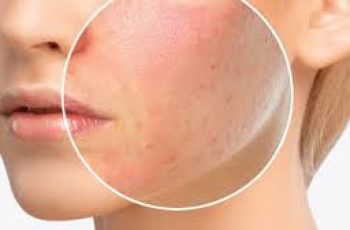
Which Ingredients Help Clear Acne?
Acne is one of the most common skin concerns, affecting people of all ages.
With the plethora of skincare products available, it can be challenging to identify which ones will actually help clear acne effectively.
From cleansers and gels to serums and masks, the market is flooded with options claiming to treat acne.
However, the key to success lies in understanding the active ingredients that tackle acne in scientifically proven ways.
These ingredients can address the root causes of acne, such as clogged pores, excess oil production, and bacterial growth. Let’s explore the most effective acne-fighting ingredients and their benefits.
Best Ingredients for Acne-Prone Skin
Acne treatments fall into two broad categories: over-the-counter (OTC) products and prescription treatments.
OTC products typically target acne in one of three ways: they kill acne-causing bacteria, reduce excess oil production, or encourage the turnover of skin cells to prevent clogging of pores.
Let’s dive into the most common active ingredients found in acne treatments and see how they work.
1. Salicylic Acid
Salicylic acid is a Beta Hydroxy Acid (BHA) known for its deep cleansing properties.
It penetrates the skin’s layers and works its way into the pores to break down and clear out dirt, oil, and bacteria that contribute to acne formation.
Salicylic acid is particularly effective at treating blackheads and whiteheads, as it can dissolve the debris that clogs pores.
Salicylic acid is often found in products such as cleansers, toners, serums, and moisturizers. To get the most out of these products, it’s essential to check the concentration of salicylic acid.
If the ingredient appears lower than the sixth position on the ingredient list, it may not have enough potency to make a significant difference.
For best results, look for products that contain at least 2% salicylic acid.
2. Benzoyl Peroxide
Benzoyl peroxide is a powerful acne-fighting ingredient known for its ability to target acne-causing bacteria (Propionibacterium acnes) and reduce inflammation.
It works by killing bacteria, removing excess oil, and exfoliating dead skin cells that can clog pores and contribute to acne flare-ups.
Benzoyl peroxide is available in OTC products ranging from 2.5% to 10% strength. Higher concentrations may be more effective but can also cause dryness, irritation, and peeling.
To minimize side effects, it’s important to start with a lower concentration and gradually increase the strength if needed.
Be cautious, as benzoyl peroxide can bleach fabrics, so avoid contact with clothes or towels.
3. Alpha Hydroxy Acids (AHAs)
AHAs, a group of chemical exfoliants, are commonly found in skincare products such as cleansers, toners, and moisturizers.
AHAs work on the skin’s surface by dissolving the bonds that hold dead skin cells together, helping to reveal newer, fresher skin underneath.
This process prevents clogged pores and helps to clear acne, especially in cases where the skin becomes thickened due to the buildup of dead skin.
Glycolic acid and lactic acid are two of the most commonly used AHAs for acne treatment.
They help exfoliate the skin gently without causing excessive dryness, making them suitable for sensitive and acne-prone skin.
In addition to preventing acne, AHAs can improve skin texture, promote even skin tone, and reduce fine lines.
4. Topical Retinoids
Topical retinoids, such as retinol and tretinoin, are often prescribed for acne treatment.
These Vitamin A derivatives work by speeding up cell turnover, preventing clogged pores, and reducing inflammation.
Retinoids are one of the most effective treatments for chronic acne, as they help to normalize the skin’s cellular turnover process, reducing the formation of comedones (clogged pores).
Retinoids are typically used at night because they can make the skin more sensitive to sunlight.
While effective, they can cause initial dryness and irritation, so it’s crucial to introduce them slowly into your routine and pair them with moisturizers to minimize side effects.
5. Azelaic Acid
Azelaic acid is a multi-purpose ingredient that fights acne, redness, and post-acne hyperpigmentation.
It has both anti-inflammatory and antibacterial properties, which help prevent acne outbreaks while calming the skin.
Azelaic acid works by inhibiting the growth of acne-causing bacteria and promoting the turnover of skin cells, reducing the risk of clogged pores.
This ingredient is often recommended for people with sensitive skin who may not tolerate stronger treatments like benzoyl peroxide or retinoids.
Azelaic acid is available in both prescription formulas and OTC products, and it is a good option for those looking to address mild to moderate acne.
6. Tea Tree Oil
Tea tree oil, extracted from the leaves of the Melaleuca alternifolia plant, has long been recognized for its antibacterial and anti-inflammatory properties.
It has been shown to reduce acne lesions and inflammation, making it a popular natural remedy for mild to moderate acne.
While studies support its effectiveness, it’s important to dilute tea tree oil before applying it directly to the skin, as it can cause irritation in concentrated forms.
Mixing 1 part tea tree oil with 9 parts water or carrier oil can help prevent skin reactions.
Prescription Treatments for Severe Acne
In cases of severe or persistent acne, prescription treatments may be necessary. These treatments are stronger and can offer more rapid results compared to OTC products.
Some common prescription treatments for acne include:
Topical antibiotics: These target and reduce acne-causing bacteria on the skin.
Oral antibiotics: For widespread acne, oral antibiotics like doxycycline or minocycline may be prescribed.
Oral contraceptives (for women): Hormonal acne, often related to fluctuations in hormones, can be treated with the combined oral contraceptive pill, which regulates hormones and helps prevent acne flare-ups.
Oral retinoids: For severe acne, medications like isotretinoin (Accutane) may be prescribed.
These medications significantly reduce oil production and prevent clogged pores, offering a long-term solution to acne.
Best Natural Ingredients for Acne
In addition to over-the-counter and prescription treatments, many people turn to natural ingredients to help treat acne.
While natural remedies may not always be as potent as medical treatments, they can be effective for mild cases or when combined with other products in your skincare routine.
Here are some natural ingredients worth considering:
1. Witch Hazel
Witch hazel, extracted from the bark of the witch hazel shrub, is known for its anti-inflammatory and antibacterial properties.
While research on witch hazel’s efficacy for treating acne is limited, studies suggest it can help soothe the skin, reduce inflammation, and combat bacteria, making it a good option for treating acne-prone skin.
2. Aloe Vera
Aloe vera has been used for centuries for its healing and soothing properties. It helps to reduce acne inflammation and can aid in the healing of post-acne scars.
Aloe vera also has antibacterial properties, which can help prevent further breakouts.
3. Green Tea Extract
Green tea is rich in antioxidants and has been shown to reduce acne-causing inflammation. It also contains EGCG (epigallocatechin gallate), which helps to reduce sebum production and prevent clogged pores.
Green tea extract can be found in many acne treatments, including face masks, serums, and toners.
Acids That Are Good for Acne
If you are incorporating acids into your skincare routine, there are two main types to consider: Alpha Hydroxy Acids (AHAs) and Beta Hydroxy Acids (BHAs).
Both types of acids are effective for acne-prone skin, but they work in different ways:
Glycolic Acid (AHA): This is one of the most popular acids for acne treatment. Glycolic acid exfoliates the skin, removing dead skin cells and preventing clogged pores.
It also boosts collagen production, improving skin texture and reducing the appearance of acne scars.
Salicylic Acid (BHA): Salicylic acid is the most effective BHA for acne treatment. It penetrates deep into the pores, removing oil, dirt, and debris that can lead to breakouts.
It’s particularly effective for treating blackheads, whiteheads, and enlarged pores.
Lactic Acid (AHA): Lactic acid offers similar benefits to glycolic acid, but with the added benefit of being more moisturizing.
It’s suitable for all skin types, including those with dry or sensitive skin. It can help exfoliate without causing excessive irritation.
Conclusion
When it comes to treating acne, the key is to use products with ingredients that target the underlying causes of acne: clogged pores, excess oil, and bacteria.
Whether you choose salicylic acid, benzoyl peroxide, AHAs, or retinoids, it’s essential to find what works best for your skin type and the severity of your acne.
Natural remedies like tea tree oil and witch hazel can complement conventional treatments, especially for mild acne.
Remember, consistency is crucial in any skincare routine.
Patience and regular use of products with active ingredients, along with proper hydration and sun protection, will help you maintain clear, healthy skin.
If your acne persists or worsens, it’s always a good idea to consult a dermatologist for personalized advice and prescription-strength treatments.


